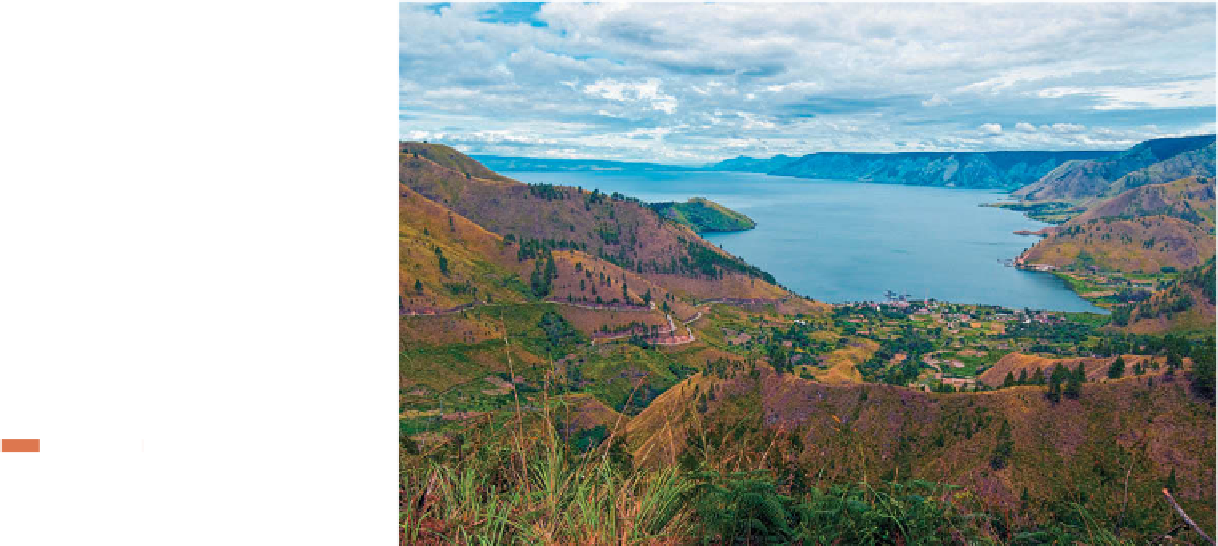Geography Reference
In-Depth Information
Figure 13.7
Mount Toba, Indonesia.
The lake in this
photo fi lls in the gigantic caldera left from
the eruption of Mount Toba on the island of
Sumatra in Indonesia.
© TeeJe/Flickr/Getty Images.
as humanity's “evolutionary bottleneck,” suggesting that
much genetic diversity was lost. Today, the fi lled-in cal-
dera marking Toba's cataclysm is 90 kilometers (55 miles)
long and 50 kilometers (30 miles) wide, silent witness to
the greatest threat to our existence ever to come from any
source (Fig. 13.7).
The Wisconsinan Glaciation eventually gave way to
a full-scale interglacial, the current warm interlude that
has been given its own designation, the
Holocene
. Global
warming began about 18,000 years ago, and for the next
6000 years, temperatures rose rapidly. Although the ice
sheets were thinning and giant, mud-laden fl oods sped
down the Mississippi Valley, building the river's enormous
delta, ice continued to cover most of northern North
America as recently as 13,000 years ago.
To our human ancestors in the northern hemisphere,
who inhabited much of western and eastern Eurasia and
may just have been entering the Americas (some schol-
ars argue that American Indians were here much earlier),
this warming must have been a welcome experience.
Slight temperature increases happened earlier, during the
Wisconsinan Glaciation, but were quickly followed by
colder times. So persistent was this most recent warming
that people ventured farther and farther poleward.
winds, and shortened growing seasons made for dwin-
dling harvests, failing farms, and seas too stormy for fi sh-
ing. By the turn of the fourteenth century, alpine glaciers
began to advance. Greenland's small settlement had long
since disappeared, and Iceland was abandoned as well.
Weather extremes abounded, not only in the form of
record cold snaps but also as searing summer heat and
raging storms.
Famines struck all over Europe, just at a time when
more people were clustered in towns than ever before.
The climatic record, pieced together from farmers' dia-
ries (winegrowers' diaries are especially useful), tree
ring research (dendochronology), ice cores, contem-
porary writings, illustrative paintings, and surviving
sketches and drawings, justify the designation of the
post-1300 period as a shift in the direction of reglaci-
ation. We now know that this return to colder times,
marked by advancing mountain glaciers and thickening
Subarctic ice, would end in the mid-nineteenth cen-
tury and that even the worst of it, starting in the late
1600s, did not lead to full-scale Pleistocene glaciation.
Whatever was happening precipitated serious social
disruptions in Europe and in other parts of the world
as well, but of course those who experienced it were
unaware of the long-term implications. Only when
new methods of analysis became available did scien-
tists realize what had happened—and then they gave
the episode an inappropriate name. This temporary
cooling was no ice age: it was a minor glaciation and not
The Little Ice Age in the Modern Era
To the farmers, winegrowers, and seafarers of the four-
teenth century, increasing cold, decreasing rainfall, frigid










































